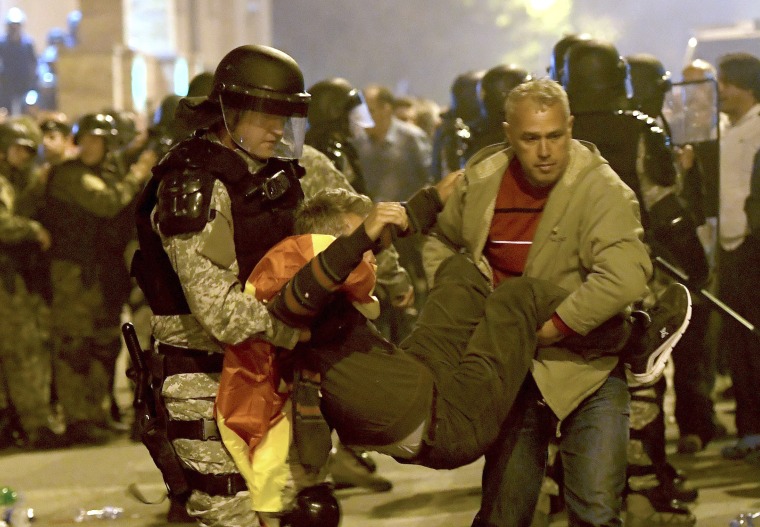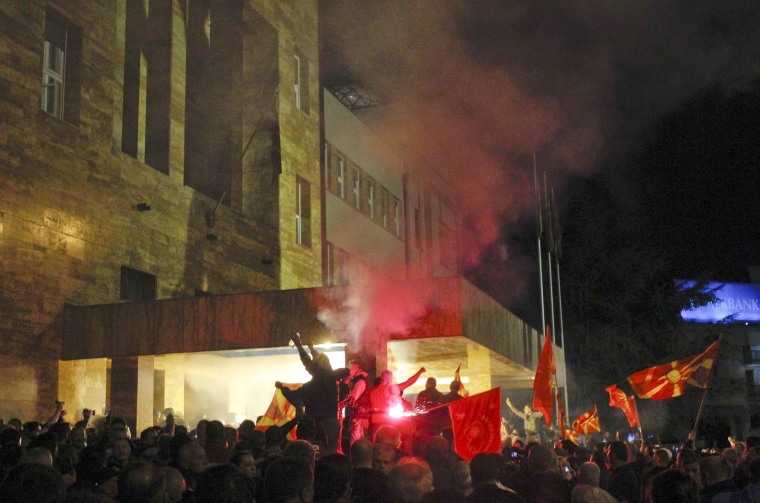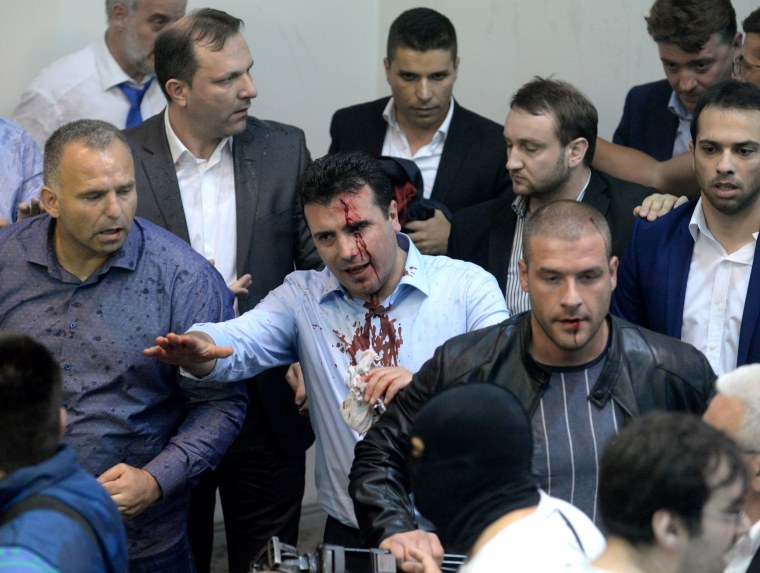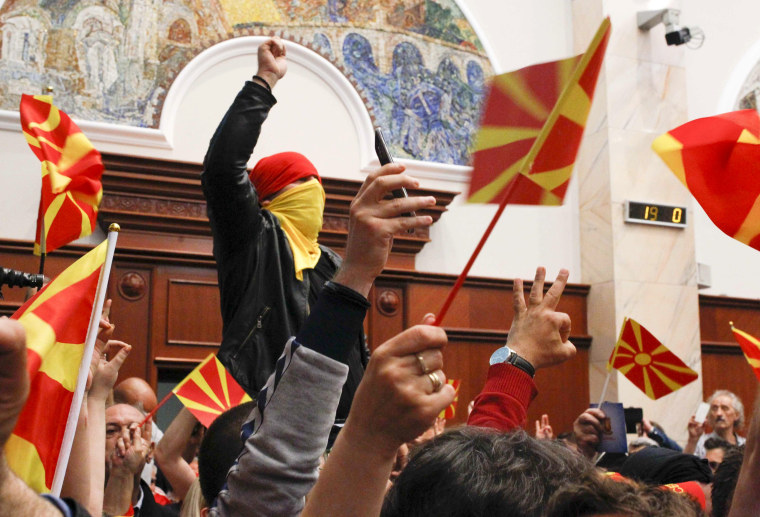Through the shaky camera footage, people wearing balaclavas and draped in the distinctive red and yellow flag of their country could be seen exchanging punches with another group of men dressed in shirts.
A woman was pulled over by her hair. Others ditched their high-heeled shoes and attempted to escape the melee by climbing over a balcony and sliding down an upturned piece of furniture.
This was not a drunken brawl inside a dive bar, but the chaotic scene inside Macedonia's parliament chamber Thursday night.
So what happened?
Dozens of nationalists stormed the parliament building in the capital Skopje and attacked opposition lawmakers.
The protesters were mainly supporters of Macedonia's dominant conservative party, according to Reuters and other journalists on the ground. Some of them wore balaclavas and sported the country's national flag, a yellow sun on a red field.
The scenes inside the young country's legislature resembled nothing short of a riot. Large crowds also gathered outside the building.
At least 100 people were injured including 22 police officers, according to The Associated Press. Among those wounded were Social Democrat leader Zoran Zaev, who was filmed with blood streaming down his face and onto his shirt, as well as the head of a small ethnic-Albanian opposition party.
Although the cops eventually used stun grenades to clear the building, several eyewitnesses said they initially did little to stop the violent protesters from getting inside.
What were they so mad about?
Protesters began streaming into the building following the election of Macedonia's first ethnic-Albanian as parliamentary speaker.
Albanians make up around a quarter of the population but the country is increasingly drawn along ethnic lines. Sixteen years ago, an uprising by Albanian rebels demanding greater minority rights brought the country to the brink of civil war.
Its political system has also been in crisis for past two years, ever since the then ruling-conservative VMRO-DPMNE party was accused of orchestrating a massive wire-tapping operation. Its leader, Nikola Gruevski, denies the charges and blames the surveillance on foreign spies.

The crisis deepened in December after elections gave no party a majority to govern, meaning a coalition was necessary to effectively rule parliament. This hasn't happened — and the country has been without a government ever since.
While the conservative VMRO-DPMNE did not have the necessary seats following December's election, the Social Democrats have been able to forge a majority with Albanian parties in exchange for granting them certain concessions.
However, President Gjorge Ivanov — the man who grants coalitions the mandate to govern — has declined to sanction this union. He is a member of the conservative VMRO-DPMNE party and says the Albanian demands threaten Macedonia's national security.
The Social Democrat-Albanian alliance has also prompted daily protests by the VMRO-DPMNE's supporters.

On Thursday, a majority of 67 lawmakers in the 120-seat parliament elected Talat Xhaferi, an ethnic-Albanian, as speaker. This was seen as the next step needed for the Social Democrats to govern.
Moments after the vote, supporters of the conservative party stormed the building.
What's been the reaction?
Gruevski, head of the VMRO-DPMNE conservatives, condemned the violence but also blamed his Social Democrat opponents for provoking it.
"Greed to seize power at any cost is the direct cause which led to this adverse situation, and they bear responsibility for it," Gruevski said according to the AP.
President Ivanov called for emergency talks but these were declined by Zaev, the Social Democrat leader, without giving a reason.
The country's interior minister has also offered his resignation.

Federica Mogherini, the European Union's chief of foreign affairs, said Friday that "violence is unacceptable, even more so when it happens in the house of democracy."
Where and what is Macedonia?
The Former Yugoslav Republic of Macedonia, as it's officially called, is a landlocked country in Eastern Europe with a population of around 2.1 million and an area the size Vermont.
As its name suggests, it was once part of Yugoslavia until it gained independence in 1991. In the post-Cold War era, the former Yugoslav countries have been a hotbed of ethnic tensions, war, and even genocide.
Macedonia came to the attention of many Americans last year after it became the unlikely epicenter of the fake-news epidemic, one of the major issues during the presidential election.
An NBC News investigation from the town exposed the lives of teenagers making thousands of dollars from fake news.

